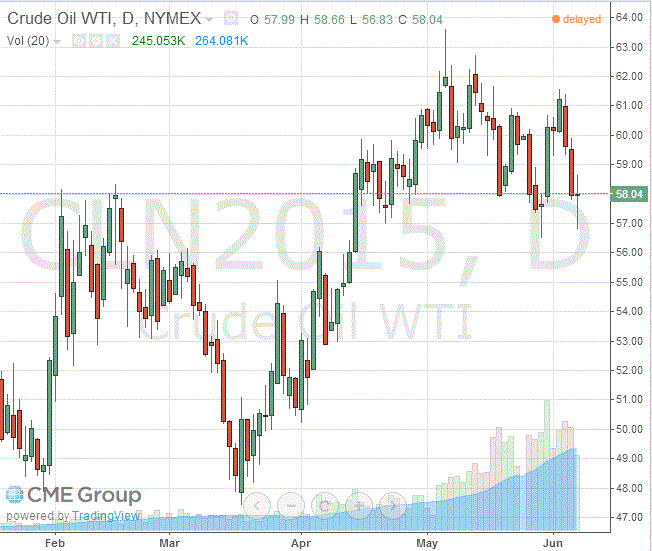- Oil prices traded mixed on the stronger U.S. dollar
Noticias del mercado
Oil prices traded mixed on the stronger U.S. dollar
Oil prices traded mixed on the stronger U.S. dollar. The U.S. dollar rose against the most major currencies after the release of the U.S. labour market data. The U.S. economy added 280,000 jobs in May, exceeding expectations for a rise of 2225,000 jobs, after a gain of 221,000 jobs in April. It was the largest increase since December.
The U.S. unemployment rate rose to 5.5% in May from 5.4% in April. Analysts had expected the unemployment rate to remain unchanged at 5.4%.
The increase was driven by people entering the labour force in search of work. The labour-force participation rate was up to 62.9% in May from 62.8% in April.
Average hourly earnings increased 0.3% in May, beating forecasts of a 0.2% gain, after a 0.1% rise in April.
Earlier, oil prices rose after the OPEC's decision to keep its oil production unchanged at 30 million barrels a day.
"Member Countries, in agreeing to this decision, confirmed their commitment to a stable and balanced oil market, with prices at levels that are suitable for both producers and consumers," the OPEC noted.
Iranian Oil Minister Bijan Zanganeh said on Friday that the oil price of $75 a barrel is a "fair" oil price for most OPEC members.
He also said that Iran plans to add 1m barrels per day of crude oil within six months of Western sanctions being lifted. Zanganeh added that oil price should not decline due to additional supply as other OPEC members will cut their oil output.
WTI crude oil for July delivery rose to $58.04 a barrel on the New York Mercantile Exchange.
Brent crude oil for July declined to $61.70 a barrel on ICE Futures Europe.
